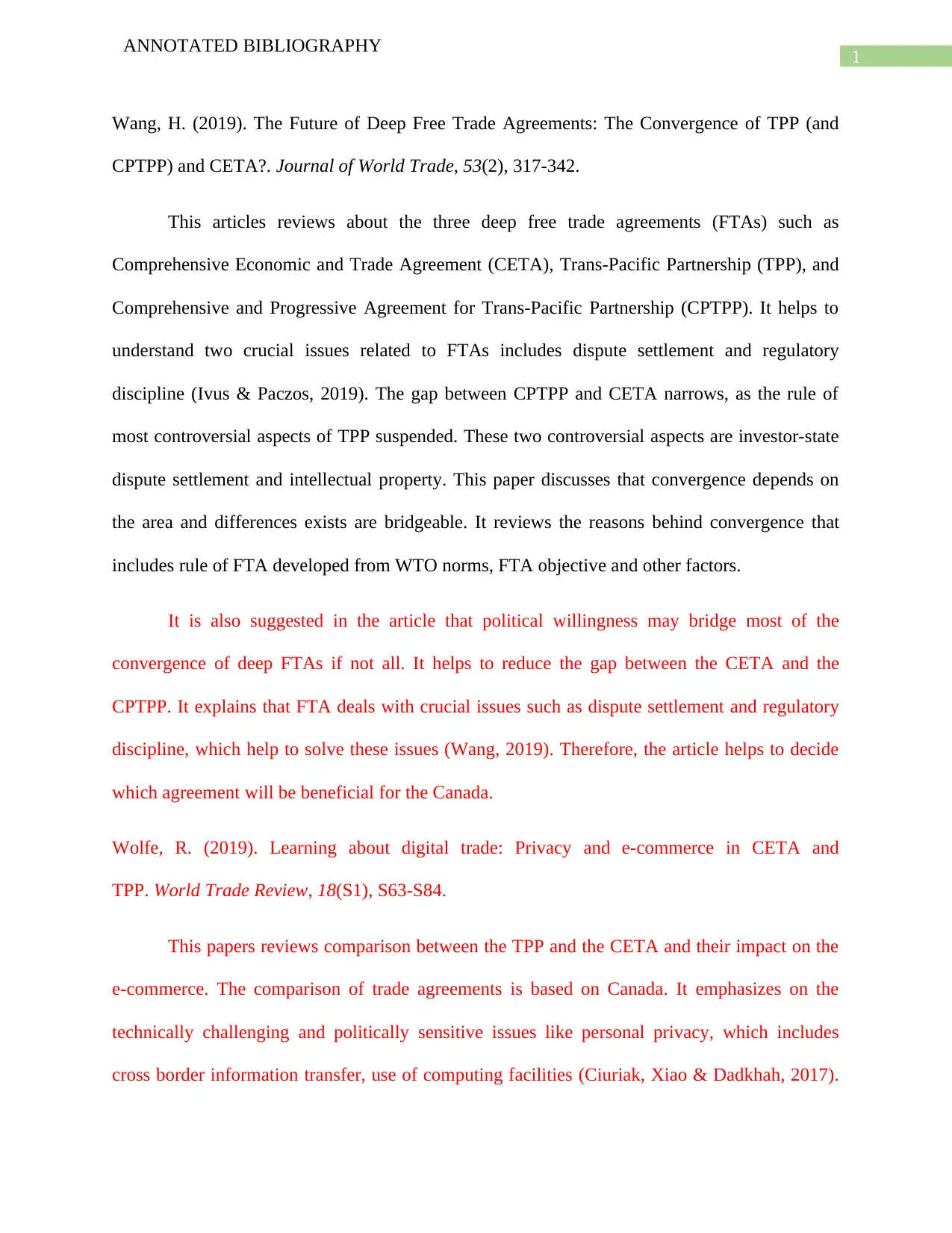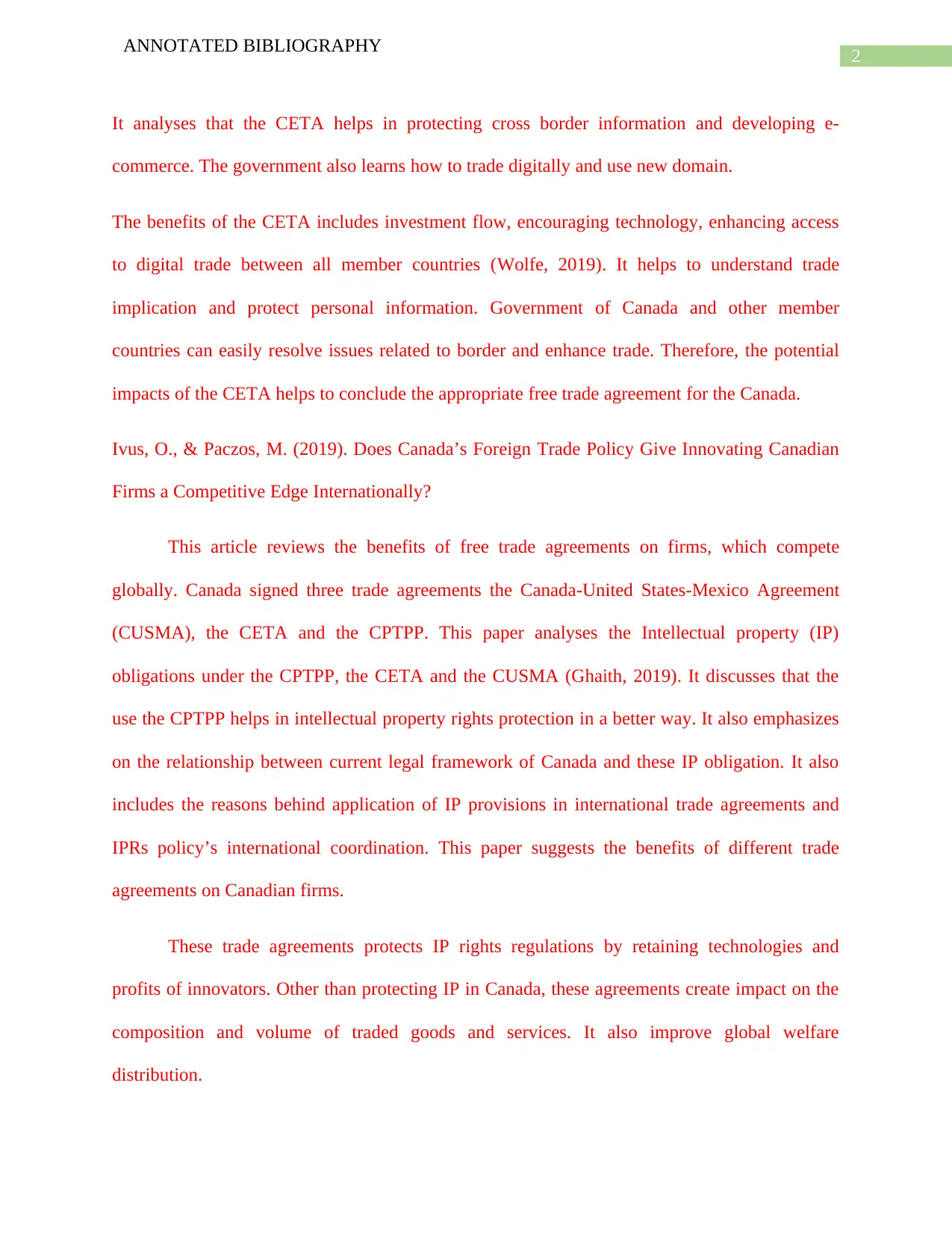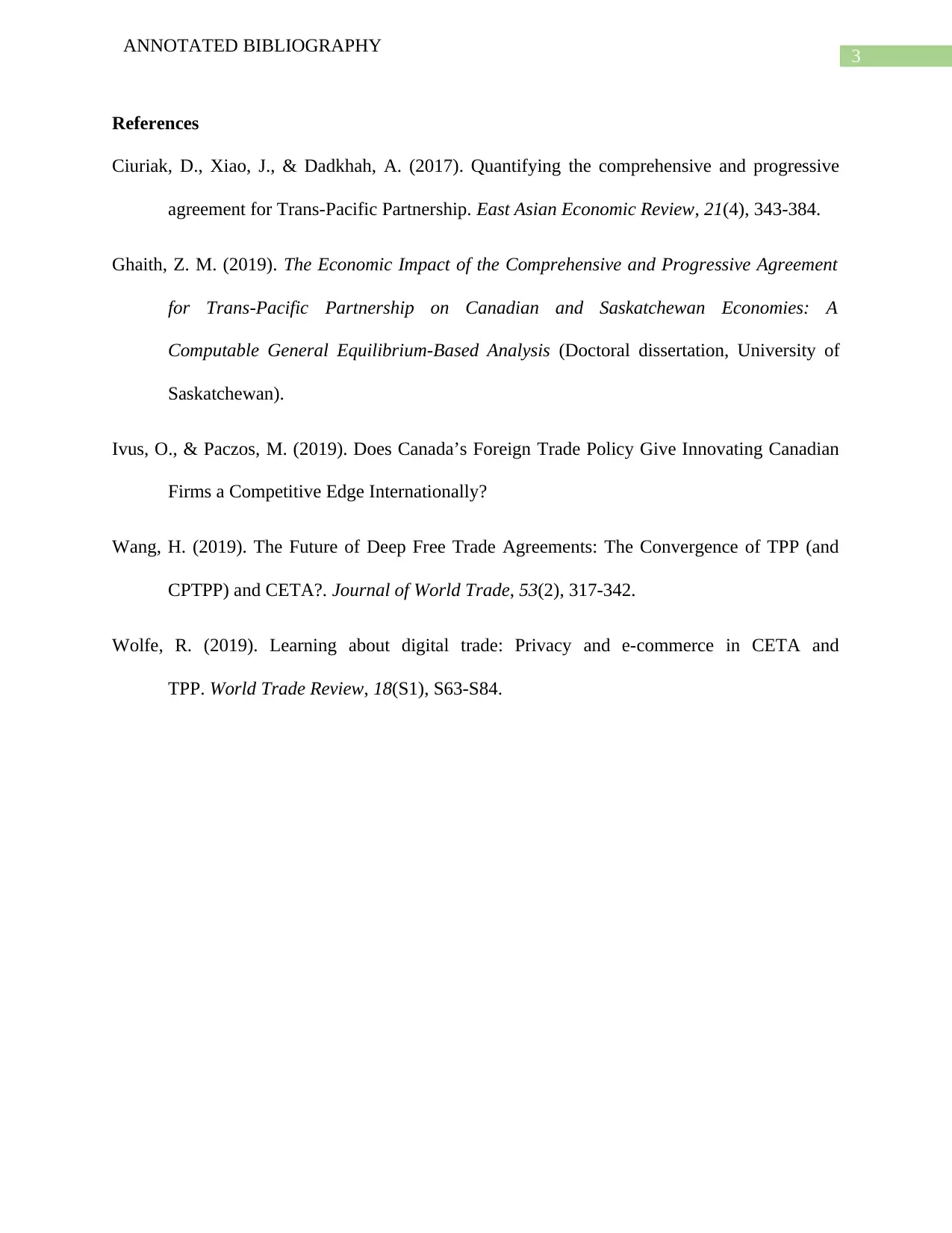Annotated Bibliography: CPTPP, CETA, and Canada's Trade Future
VerifiedAdded on 2022/10/04
|4
|853
|43
Annotated Bibliography
AI Summary
This annotated bibliography, prepared by a student, examines three peer-reviewed articles related to the Comprehensive and Progressive Agreement for Trans-Pacific Partnership (CPTPP) and the Canada-European Union Comprehensive Economic and Trade Agreement (CETA). The assignment aims to analyze which agreement would be more beneficial for Canada in the long term. The first article, by Wang (2019), discusses the convergence of deep free trade agreements, focusing on dispute settlement and regulatory discipline. The second article, by Wolfe (2019), compares the TPP and CETA, focusing on e-commerce and privacy. The third article, by Ivus & Paczos (2019), reviews the benefits of free trade agreements on firms, focusing on intellectual property obligations. Each entry includes a summary of the article and an assessment of its relevance to the research question. The student follows APA format and citation guidelines throughout the bibliography, demonstrating their ability to summarize research, and make reasoned judgments about the validity of researched articles based on their understanding of active reading and critical thinking.
1 out of 4





![[object Object]](/_next/static/media/star-bottom.7253800d.svg)